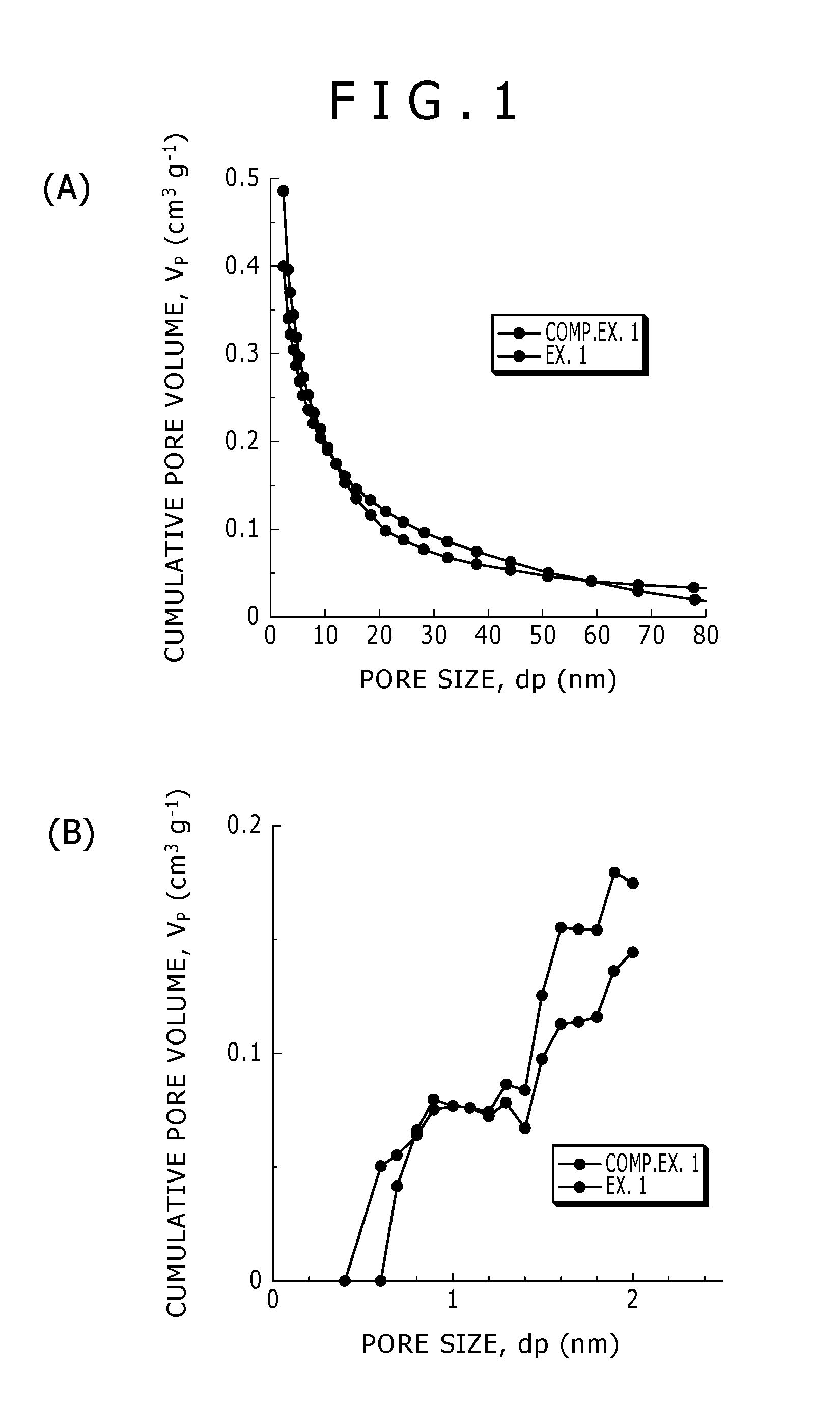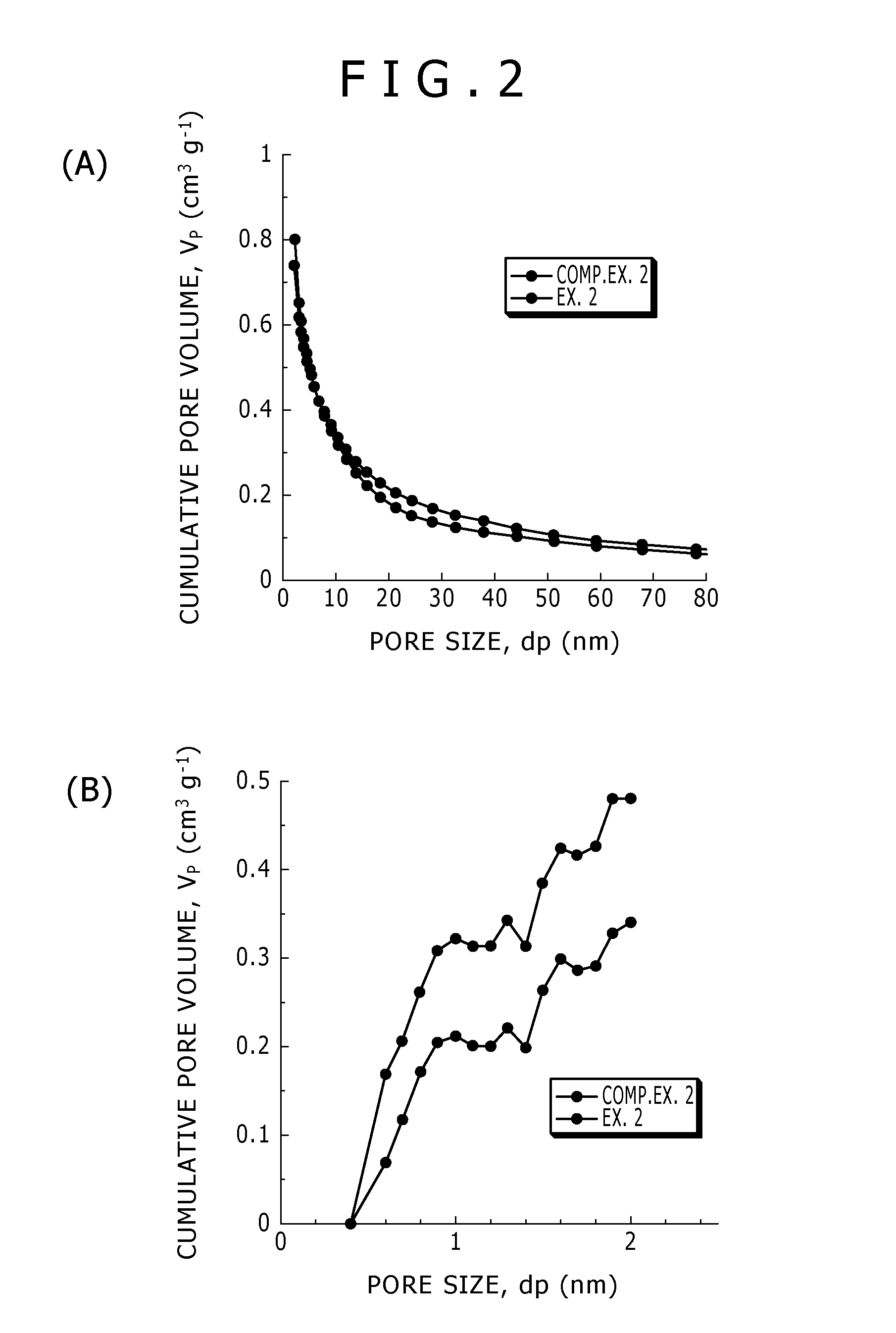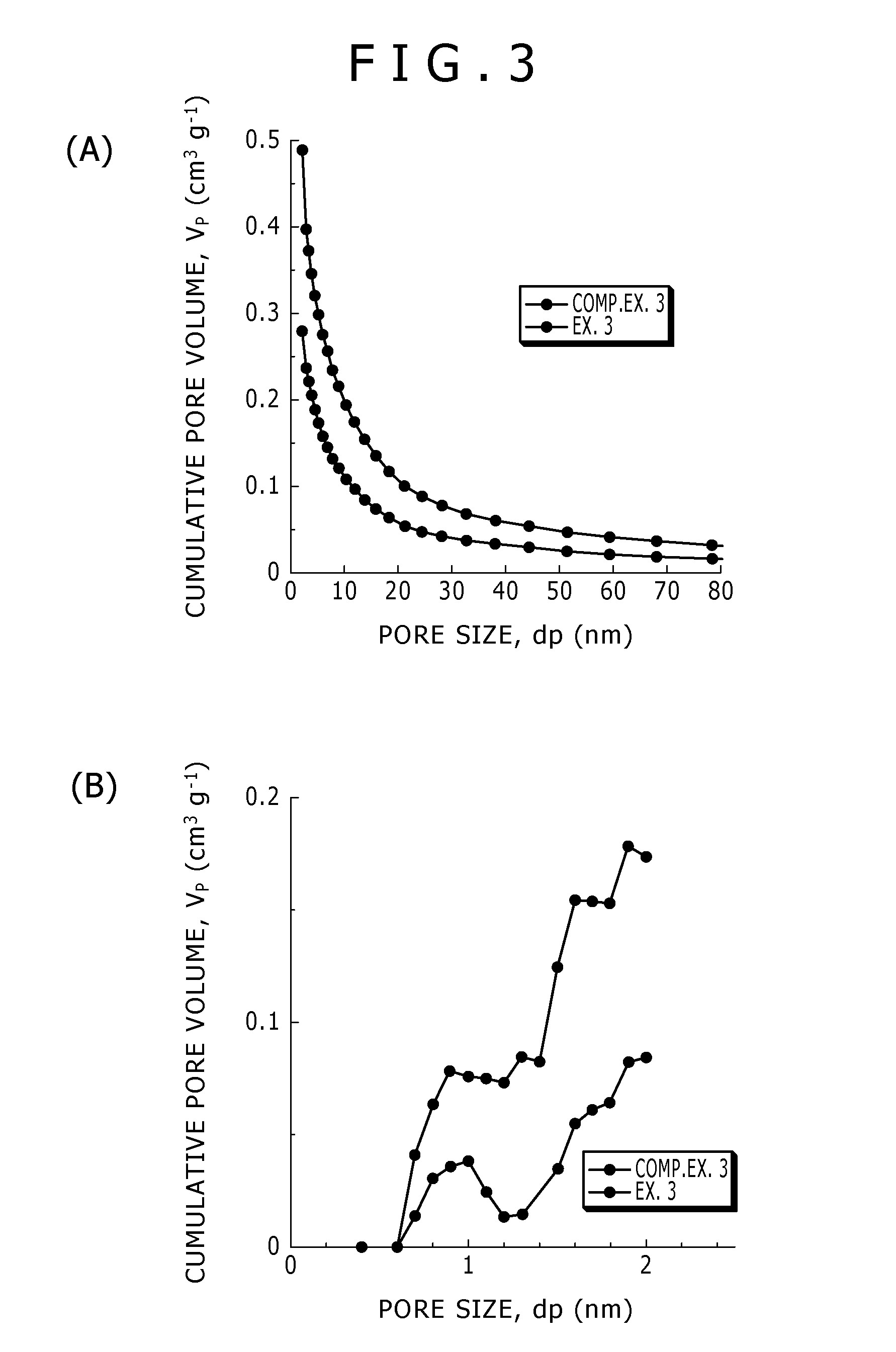Porous carbon material composites and their production process, adsorbents, cosmetics, purification agents, and composite photocatalyst materials
a technology of porous carbon material and composites, which is applied in the direction of catalyst activation/preparation, magnetic materials, inorganic non-active ingredients, etc., can solve the problems of liver inflicting significant damage by the body, and achieve the effects of high functionality, high specific surface area, and high properties
- Summary
- Abstract
- Description
- Claims
- Application Information
AI Technical Summary
Benefits of technology
Problems solved by technology
Method used
Image
Examples
example 1
[0156]Example 1 relates to the porous carbon material composite according to the present invention and also to the process according to the present invention for the production of a porous carbon material composite. A porous carbon material composition of Example 1 is composed of:
[0157](A) a porous carbon material obtainable from a plant-derived material having a silicon (Si) content of 5 wt % or higher as a raw material, said porous carbon material having a silicon (Si) content of 1 wt % or lower; and
[0158](B) a functional material adhered on the porous carbon material.
[0159]The porous carbon material composite has a value of specific surface area of 10 m2 / g or greater as determined by the nitrogen BET method and a pore volume of 0.1 cm3 / g or greater as determined by the BJH method and MP method.
[0160]In Example 1, rice (rice plant) husks were used as a plant-derived material, that is, a raw material for a porous carbon material. The porous carbon material in Example 1 was obtained...
example 2
[0189]Example 2 is a modification of Example 1. In Example 2, activation treatment was conducted by heating the porous carbon material at 900° C. in a steam stream for three hours subsequent to [Step 100] in Example 1. After that, similar complexing treatment as in [Step 110] in Example 1 was conducted.
[0190]The same porous carbon material (which had not been subjected to the complexing treatment) as in Example 2 was provided as Comparative Example 2 for various tests.
[0191]With respect to the porous carbon material composite of Example 2 and the porous carbon material of Comparative Example 2, the values of their specific surface areas and their pore volumes were measured. The results shown in Table 1 were obtained. The pore size distributions of their mesopores and micropores were also measured. The results shown in (A) of FIG. 2 (B) of FIG. 2 were obtained.
[0192]The porous carbon material composite of Example 2 subjected to the complexing treatment was greater in the value of spe...
example 3
[0196]Example 3 is also a modification of Example 1. In Example 3, a functional material was made of a metal, specifically gold (Au), more specifically gold nanoparticles. In Example 3, after [Step 100] in Example 1 was conducted, the functional material was caused to adhere on the resultant porous carbon material. Described specifically, after the porous carbon material was charged as complexing treatment in a 0.25 mol / L aqueous solution of chlorauric acid, said aqueous solution containing sodium citrate at a concentration of 0.875 mol / L, the resulting mixture was boiled for 20 minutes. Subsequently, the resulting porous carbon material composite was collected by filtration, and was thoroughly washed with water.
[0197]The same porous carbon material (which had not been subjected to the complexing treatment) as in Example 3 was provided as Comparative Example 3 for various tests.
[0198]With respect to the porous carbon material composite of Example 3 and the porous carbon material of ...
PUM
| Property | Measurement | Unit |
|---|---|---|
| Temperature | aaaaa | aaaaa |
| Temperature | aaaaa | aaaaa |
| Specific surface area | aaaaa | aaaaa |
Abstract
Description
Claims
Application Information
 Login to View More
Login to View More - R&D
- Intellectual Property
- Life Sciences
- Materials
- Tech Scout
- Unparalleled Data Quality
- Higher Quality Content
- 60% Fewer Hallucinations
Browse by: Latest US Patents, China's latest patents, Technical Efficacy Thesaurus, Application Domain, Technology Topic, Popular Technical Reports.
© 2025 PatSnap. All rights reserved.Legal|Privacy policy|Modern Slavery Act Transparency Statement|Sitemap|About US| Contact US: help@patsnap.com



